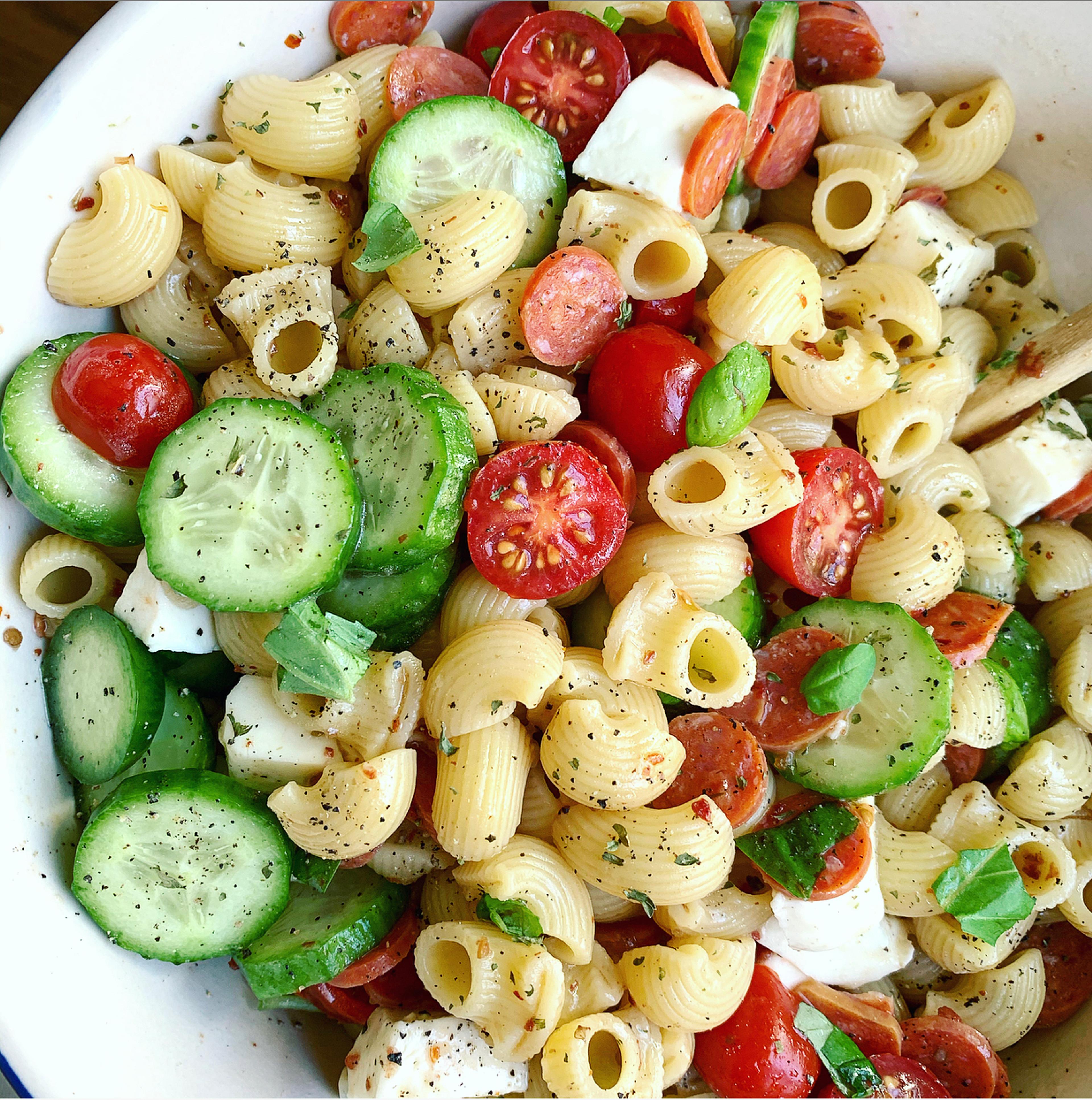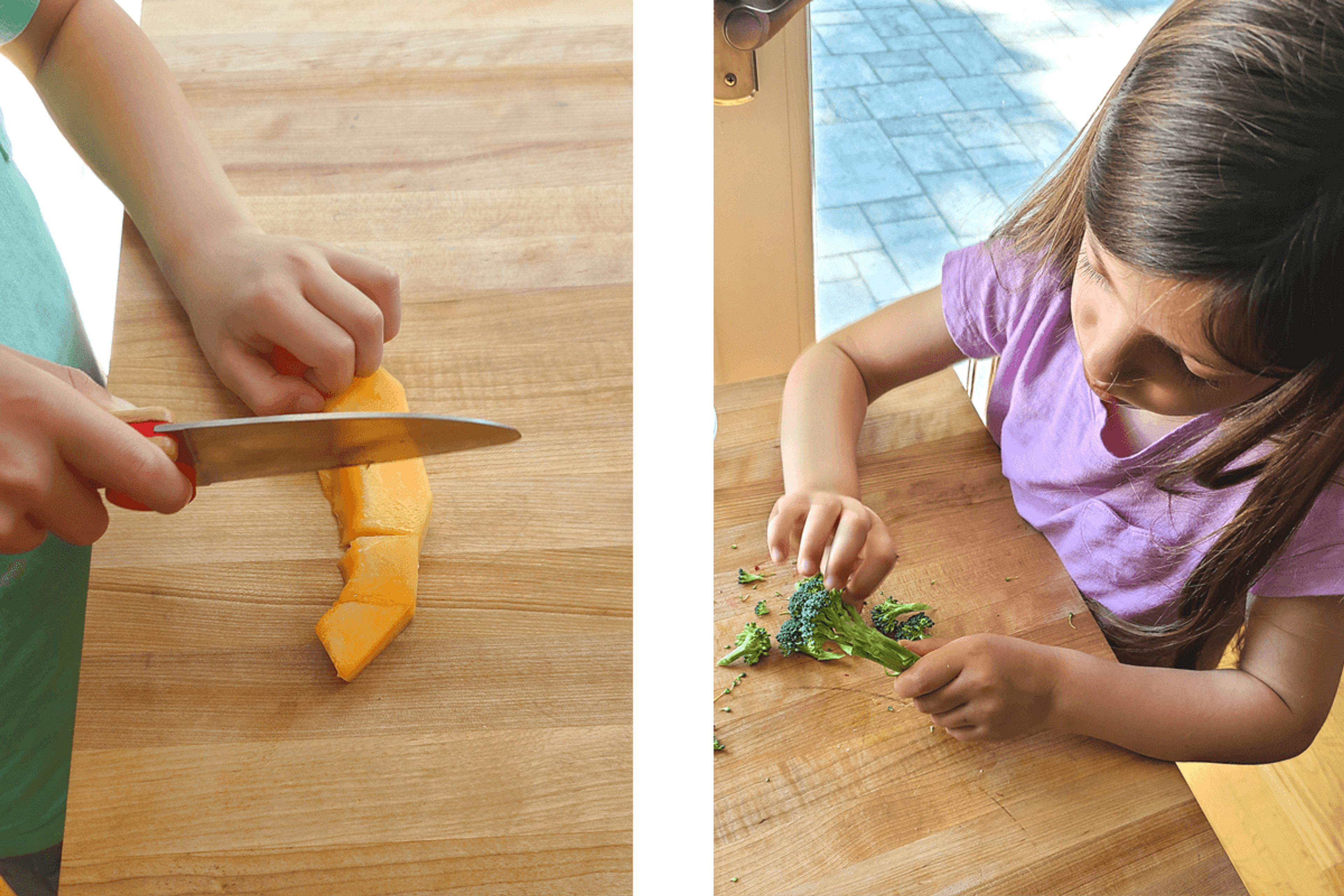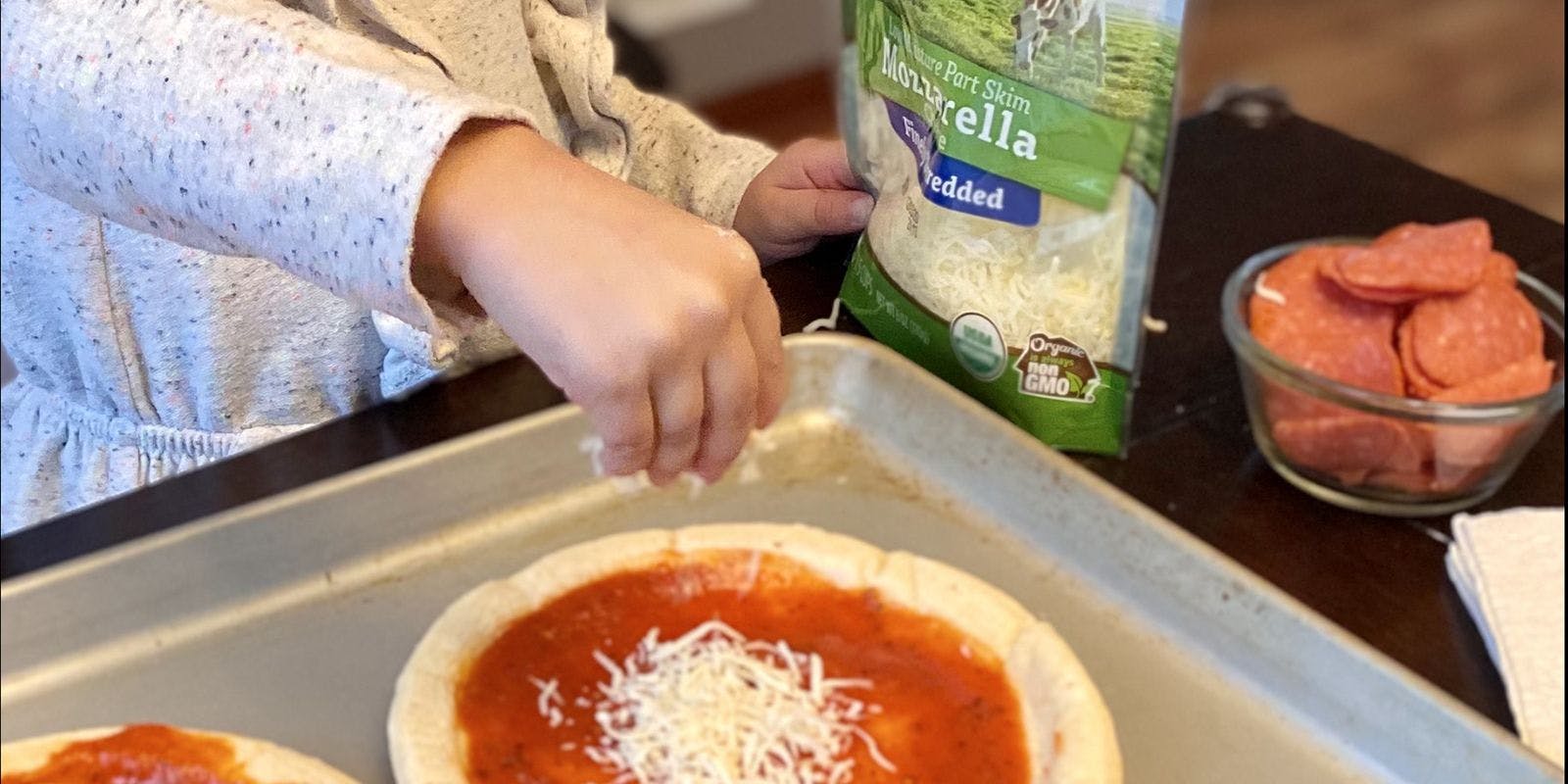
Food
Healthy Ways to Get Your Picky Eater to Try New Foods
Working with picky eaters is tough. Although adults may be picky too, the real frustration comes from wheedling, bribing, pretending, threatening, and pressuring the little ones, and of course, the inevitable tantrums that follow.
It. Is. Exhausting.
And worst of all, it turns dinnertime into an event that’s dreaded rather than welcomed.
We here at Organic Valley love dinnertime. Whether you call it dinner or supper, whether you sit down together every night or make it a point once a week, this meal is a wonderful time to decompress and reconnect. Of course, we know not every dinnertime is going to meet that ideal, but we want to help you work toward it every day!
We asked a registered dietitian and two moms for their best advice on getting picky kids to try new foods. They each had great ideas to try, and interestingly, they all fit into similar themes: Have Fun and Low Pressure.
Having fun is relatively easy, and they’ve provided lots of sweet ideas for making the experience of trying new foods fun for both you and your kids.
But reducing the pressure is more difficult. There’s the #momguilt, and the wondering if they’re getting adequate nutrition, and the total frustration when your 2-year-old won’t be reasoned with. We get it. It takes a conscious effort to let it go when it seems like your kid is “just being stubborn.” [Insert chorus to a certain popular movie theme song here.]
Take a peek at these tips from a dietitian and from fellow moms, and take comfort in the fact that You Are Not Alone in the picky eater conundrum. Let’s take dinnertime from “dreaded” to “delightful”!

A simple pasta salad can be an easy way to introduce new foods alongside familiar ones. And it can be delicious for both kids and adults! Photo by Jennifer Combs.
Advice from a Dietitian: “Picky eating is normal”
By Laura Poe Mathes, R.D., of Viroqua Nutrition Counseling and Brine and Broth
Having a child that displays selective or “picky” eating habits can be difficult, both on the parents and the child. Children may need to try new foods more than a dozen times before becoming familiar enough with the food to eat or enjoy it regularly, so give your child and this process a lot of space and time. Also, keep in mind this process doesn’t end at a certain age. As they grow, children’s taste buds continue to develop, so it’s equally important to introduce (or re-introduce) foods even into their teen years. Patience, perseverance, and low pressure will help you—and your child!—succeed in the long-term.
One of my favorite strategies is focusing on making mealtime fun. Games such as seeing who can try the greatest number of new foods or creating a “new foods bingo” game can add a bit of friendly competition and excitement to a typically grueling process.
Besides games, you could try making the mealtime itself more special. Plan a themed dinner night or a “fancy” dinner where family members wear dress-up clothes, practice their best manners, and have a nicely set table with candles. Making mealtime a special occasion can make children more open to trying something different.
Try offering new foods in very small amounts, accepting even one dot of the food as one “try,” then increasing the amount very gradually with each re-introduction. Try the food in different ways if rejected at first, such as serving it with a different texture or temperature (i.e., cooked vs. raw, finely chopped vs. larger pieces vs. pureed). Pairing new or less desirable foods with familiar foods like cheese, ranch dressing, or dips can also be a helpful and easy tactic, but try not to rely solely on this as it will not work for all foods.
It’s OK for kids to have preferences, just like adults! Try not to be too attached to the idea that they must love a certain food, as they may still avoid it even after 15 or more tries. They may even change their mind about a food they previously liked. Pressuring food choices doesn’t help make kids less picky, and using food as either a reward or punishment can promote unhealthy relationships with food for a child. So instead, try a playful, relaxed approach. Adding a bit of fun and levity can make the process smoother, more successful, and more enjoyable for all.
If you’re extremely concerned about possible malnutrition or potential psychological reasons for extremely high food selectivity (where the child will only eat a very limited number of foods), certainly contact a medical professional for more help. But for most children, picky eating is very normal, so try not to excessively worry. Trust your kids and be confident that, with time and patience and a bit of fun thrown in, your picky eater will develop into a healthy kiddo with a love for many different foods.

These cheesy chicken meatballs with fun green pasta can be a simple way to tempt picky eaters to try their broccoli too! Photo by Jennifer Combs.
3 Key Tips for Navigating Picky Kids
By Jennifer Combs of Kale and Kiddos, @kaleandkiddos
I echo my fellow parents in acknowledging the ebbs and flows of parenthood, the challenges and celebrations, the times when you feel defeated and the moments you wish you could savor forever. I’ve found that those defining moments are what make the joys of motherhood that much sweeter. Those moments are as fluid as motherhood itself—likely to change from one family to the next.
There is one topic, however, that always comes up, particularly when I gather with my sisters and sister-in-law: picky eaters! We always fall into a conversation about our children’s eating habits. It probably goes without saying, but I'm sure most have experienced a phase where getting anything into our kids other than bread and cheese can feel nearly impossible. (I'm the last person to knock those two glorious foods, by the way.) So how did I go from [low-key] dreading mealtime, where my kids would take anything they didn't want to eat off their plates and lay it on the table, to enjoying our family time around the table and where they will now at least try something less familiar?
Consistency. Realistic expectations. Low pressure.
They probably aren't going to face-plant into a pile of carrots the first time you introduce them, but by consistently allowing them to see those colorful veggies on even a small section of the plate, it will become familiar and friendly rather than scary or uncertain. In time, those sweet little fingers will inch toward them and willingly give them a try.
If your child is old enough, it could be fun to let them pick out vegetables at the store or, given the right season, some seedlings to plant for a potential harvest. My daughter Sadie and I planted a zucchini bush this spring and she has been incredibly eager to try new recipes in sweet and savory dishes once our zucchinis are ripe.
I've also found that by keeping the pressure low—even fun!—around trying new things, mine are more likely to give new foods a shot. Sometimes for a little extra encouragement, we will cheers to the new food. We all get a bite on our fork, cheers (yes, like you would a drink), and then all take a bite at the same time. My kids also love the challenge of trying to eat with chopsticks, which was actually a pretty cool way to watch them attempt to eat edamame.
My goal is to have them try the new food at least once and praise them when they do! I can only hope this will set them up for exploring new foods on their own and enjoying a variety of cuisines themselves one day.
So here’s to you, Parents—for raising your tribe amid the chaos, for wanting the best for them in all aspects of life, and for reaping the rewards of the energy and love you so tirelessly pour into them daily. OK, so maybe we’re a little tired, but it’s worth it to see those little faces light up with excitement and pride from trying something new and delicious.

Sorting foods into muffin tins can inspire conversations about food, serving sizes, balancing the colors on their plates, and much more. Photo by Sarah Ricci.
Make Food Fun for Picky Eaters
By Sarah Ricci of Cooking with Riccis, @cookingwithriccis
Asking my kids to try new foods while also making sure they get a daily dose of needed fruits and veggies has its challenges! I find that by including my kids in the process of kitchen prep and cooking, they are more encouraged to eat the foods I want them to eat. Simple tasks like washing and drying fresh fruits and vegetables brought home from the market to light prep work keeps them connected and inspires curiosity about what those foods they helped prepare taste like.
When it comes to preparing each ingredient for a meal or snack break, I give them fun tasks they can easily handle to be part of the kitchen experience. The kids work at a table where the countertop is at waist level. My son Darren (age 6) likes to chop soft foods like strawberries, melon, avocado, celery, boiled pasta, roasted beets, blanched carrots, and soft cheese. Lillian (age 4) gets tasks like separating broccoli florets by hand or peeling the shell off hard-boiled eggs.
Sometimes we play a fun game by selecting ingredients from the five major food groups. We prep and divide them out into a muffin pan. Having the foods separated like this also allows them to easily pick and choose a new food to try with something I know they already love.
It is a balancing act with my kids and food, but I find these little steps help keep them engaged and encouraged to consume more of the good stuff I want them to have!

Let’s sum up:
- Have fun! Think up little games, competitions, themed dinners, play music, dance!
- Involve kids in the kitchen. They may be less skeptical when they watch a food go from its original to prepared form. Feeling included in their food choices can inspire curiosity.
- Be consistent. You know your child best—set a frequency that works for them, and stick with it. But also remember that trying new foods doesn’t have to be solely a dinnertime deal! There’s breakfast, lunch, and snacktime too. Changing up the meals when new foods are introduced can prevent “dinnertime dread.”
- Reduce the pressure, on both you and them. Don’t let the picky eater derail mealtime for the whole family. Give it a try and move on. And try not to worry—pickiness is normal, and your child is likely still receiving adequate nutrition. But if you have reason to be truly concerned, speak to a professional.
- Set realistic expectations. Remember, they’re just little humans! Everyone has preferences, but a toddler or young child can’t be expected to know what they like or what’s healthy for them. They’re just figuring all this out, so set reasonable expectations for your child’s age, and roll with it.
We hope these ideas have inspired you to try something new with your picky eaters, whether they’re toddlers or teens. And if nothing else, belt out a chorus of “Let It Gooooo” as you mix those peas into some organic mac ’n cheese.
Do you have your own healthy tips for getting picky eaters to try new foods?
Share your ideas with us on Instagram and we might feature them on our account!
Related Articles
- Tags:
- cooking & entertaining,
- family & kids
















